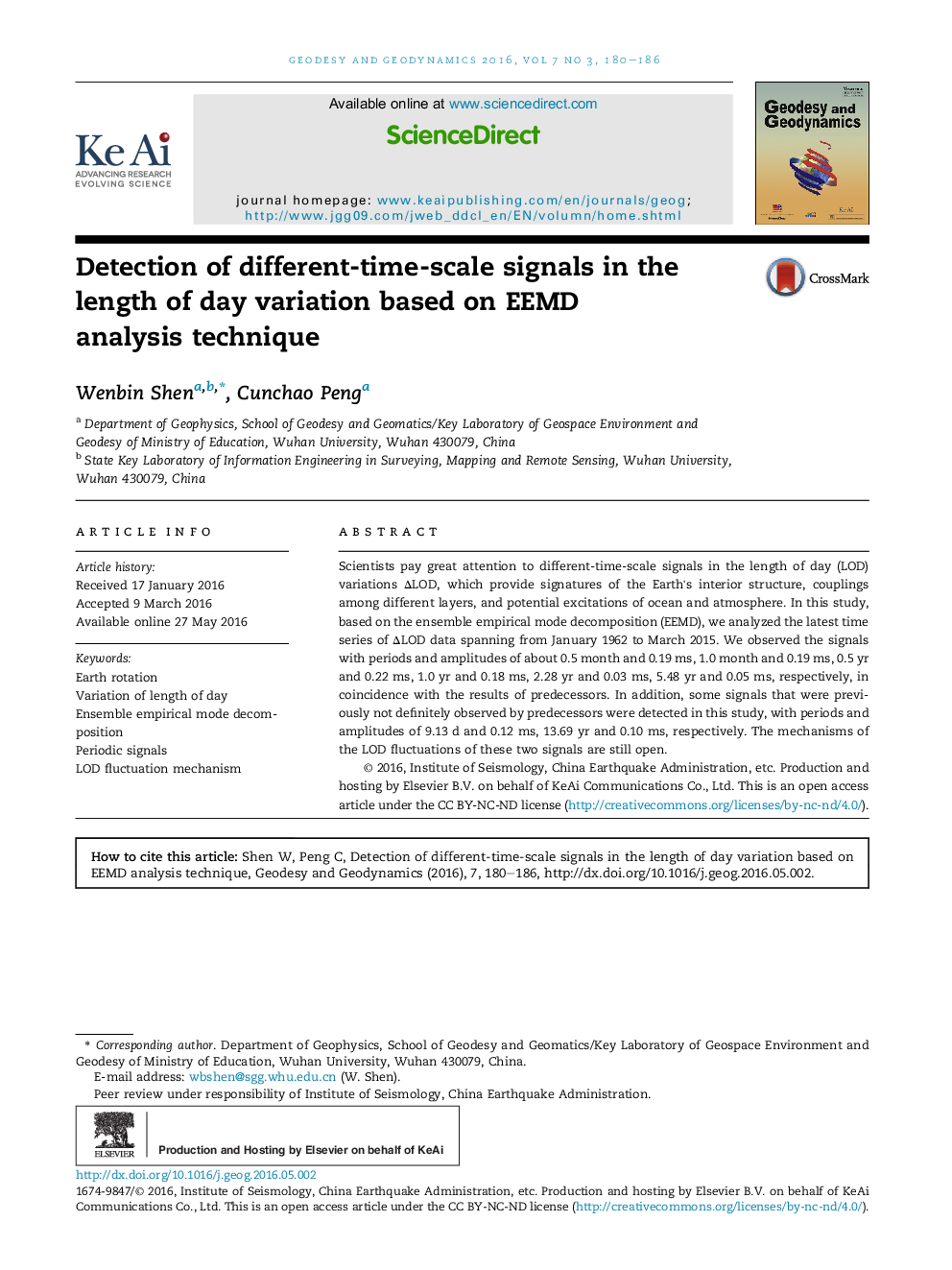| Article ID | Journal | Published Year | Pages | File Type |
|---|---|---|---|---|
| 4683540 | Geodesy and Geodynamics | 2016 | 7 Pages |
Scientists pay great attention to different-time-scale signals in the length of day (LOD) variations ΔLOD, which provide signatures of the Earth's interior structure, couplings among different layers, and potential excitations of ocean and atmosphere. In this study, based on the ensemble empirical mode decomposition (EEMD), we analyzed the latest time series of ΔLOD data spanning from January 1962 to March 2015. We observed the signals with periods and amplitudes of about 0.5 month and 0.19 ms, 1.0 month and 0.19 ms, 0.5 yr and 0.22 ms, 1.0 yr and 0.18 ms, 2.28 yr and 0.03 ms, 5.48 yr and 0.05 ms, respectively, in coincidence with the results of predecessors. In addition, some signals that were previously not definitely observed by predecessors were detected in this study, with periods and amplitudes of 9.13 d and 0.12 ms, 13.69 yr and 0.10 ms, respectively. The mechanisms of the LOD fluctuations of these two signals are still open.
